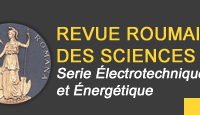Paper title: MAGNETOCRYSTALLINE ANISOTROPY IN THIN GRAIN ORIENTED SILICON IRON ALLOY CUT THROUGH DIFFERENT TECHNOLOGIES
Author(s): LAURENTIU DUMITRU, VERONICA PĂLTÂNEA, GHEORGHE PĂLTÂNEA, HORIA GAVRILĂ,
Abstract: Investigation of the magnetocrystalline anisotropy of the grain oriented (GO) electrical steels is important in improving the
performance of the electrical devices, since they are used as magnetic cores for transformers. Due to the (110)[001] Goss texture,
these alloys have a strong magnetic anisotropy with the easy axis [001] along the rolling direction (RD) and hard axis [111] at
about 54º to the rolling direction. In the electrical transformers, the magnetic flux path has usually a straight direction, which
follows the [001] axis. Because of the geometry of magnetic core that contains T-joint intersections and corner parts, the
magnetization detours and intersects the easy axis of the steel sheet at different values of the angle between the RD and the
magnetic flux direction. In the paper there were analyzed samples made of a commercial grain oriented alloy (M0H) with
thickness of 0.30 mm. The 300 mm × 30 mm samples were cut through punching and laser technology at different angles (0º, 15º,
30º, 45º, 60º, 75º, 90º) with the rolling direction. For the representation of the magnetic field strength at constant magnetic
polarization it was used a software program that interpolated the experimental results. A frequency analysis from 12 Hz to 100
Hz was performed, to investigate the energy loss behavior and, by applying the loss separation concept, the influence of the
cutting technology and the magnetocrystalline anisotropy on the hysteresis, classical and excess losses was studied.
Keywords: Magnetocrystalline anisotropy, Laser cut technology, Punching, Energy losses, Easy and Hard axes Year: 2016 | Tome: 61 | Issue: 3 | Pp.: 221-226
Full text : PDF (421 KB) |



